
DomManuel II, "the Patriot" or "the Unfortunate", was the last King of Portugal, ascending the throne after the assassination of his father, King Carlos I, and his elder brother, Luís Filipe, the Prince Royal. Before ascending the throne he held the title of Duke of Beja. His reign ended with the fall of the monarchy during the 5 October 1910 revolution, and Manuel lived the rest of his life in exile in Twickenham, Middlesex, England.
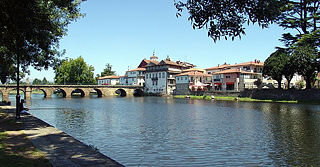
The attack on Chaves, which occurred on 8 July, 1912, was a military action performed by supporters of the monarchy of Portugal in opposition to the Portuguese First Republic, which had been proclaimed two years prior.

Manuel José de Arriaga Brum da Silveira e Peyrelongue was a Portuguese lawyer, the first attorney-general and the first elected president of the First Portuguese Republic, following the deposition of King Manuel II of Portugal and a Republican Provisional Government headed by Teófilo Braga.

Vinhais is a municipality in the district of Bragança, northern Portugal. The population in 2011 was 9,066, in an area of 694.76 km2.

João do Canto e Castro da Silva Antunes, commonly known simply as João do Canto e Castro was a Portuguese Navy officer and the fifth president of Portugal during the First Portuguese Republic. He also briefly served as 67th prime minister of Portugal.

Henrique Mitchell de Paiva Cabral Couceiro was a Portuguese soldier, colonial governor, monarchist politician and counter-revolutionary; he was notable for his role during the colonial occupation of Angola and Mozambique and for his dedication to the Monarchist Cause during the period of the First Portuguese Republic through the founding of the Monarchy of the North.
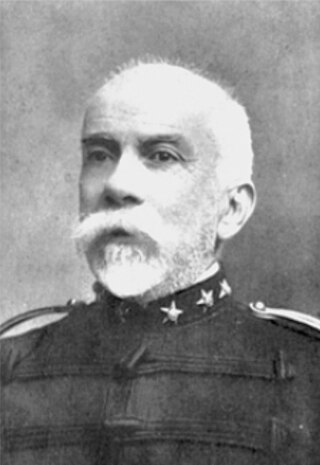
Joaquim Pereira Pimenta de Castro, 10th Count of Pimenta de Castro was a Portuguese army officer and politician. He was a career military officer reaching the position of General, also graduated in mathematics by the University of Coimbra. In 1908, he was nominated commander of the 3rd Military Region, in Porto. After the proclamation of the Republic on 5 October 1910, he was Minister of War, for only two months, in 1911. He had to resign due to the monarchist incursion of Henrique de Paiva Couceiro. An independent, he was chosen by President Manuel de Arriaga to be the President of the Ministry of a government, who would rule without the parliament, where the Portuguese Republican Party, led by Afonso Costa had the majority. His government, with the support of the moderate Evolutionist Party and the Republican Union, and also conservative military factions, was in office from 28 January to 14 May 1915. It was overthrown by the military movement of 14 May 1915, supported by the Republican Party, which also caused the resignation of President Manuel de Arriaga.

The 5 October 1910 revolution was the overthrow of the centuries-old Portuguese monarchy and its replacement by the First Portuguese Republic. It was the result of a coup d'état organized by the Portuguese Republican Party.
Integralismo Lusitano was a Portuguese integralist political movement founded in Coimbra in 1914 that advocated traditionalism but not conservatism. It was against parliamentarism but favoured decentralization, national syndicalism, the Roman Catholic Church and the monarchy. Its members included an amalgam of rightists, monarchists, Catholics and nationalists.

The Confederation of the Equator was a short-lived rebellion that occurred in the northeastern region of the Empire of Brazil in 1824, in the early years of the country's independence from Portugal. The secessionist movement was led by liberals who opposed the authoritarian and centralist policies of the nation's first leader, Emperor Pedro I. The fight occurred in the provinces of Pernambuco, Ceará and Paraíba.
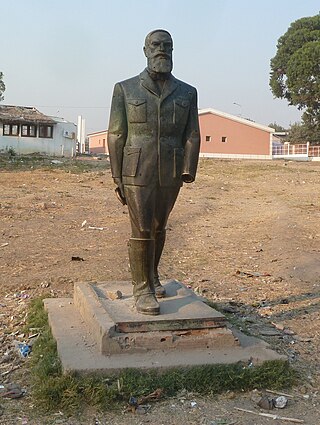
António Francisco Ferreira da Silva Porto was a Portuguese trader and explorer in Angola, in the Portuguese West Africa.

The Kingdom of Portugal was a monarchy in the western Iberian Peninsula and the predecessor of the modern Portuguese Republic. Existing to various extents between 1139 and 1910, it was also known as the Kingdom of Portugal and the Algarves after 1415, and as the United Kingdom of Portugal, Brazil and the Algarves between 1815 and 1822. The name is also often applied to the Portuguese Empire, the realm's overseas colonies.
The Convention of Gramido was an agreement signed on 29 June 1847, in Casa Branca on the town square of Gramido, in Valbom, Gondomar, Portugal, to end the civil war of the Septembrists against the Cartistas known as the Patuleia. The Convention was signed by the commanders of the Spanish and British military forces that had entered Portugal on behalf of the Quadruple Alliance, the representative of the Portuguese government in Lisbon, and the representatives of the Junta in Porto. It sealed the defeat of the Septembrists.

The Federalist Revolution was a civil war that took place in southern Brazil between 1893 and 1895, fought by the federalists, opponents of Rio Grande do Sul state president, Júlio de Castilhos, seeking greater autonomy for the state, decentralization of power by the newly installed First Brazilian Republic and, arguably, the restoration of the monarchy.
Alberto de Morés Monsaraz was a Portuguese politician and poet. He was one of the central figures in the Integralismo Lusitano that dominated the far-right of Portuguese politics during the early years of the twentieth century.

The term "provinces" has been used throughout history to identify regions of continental Portugal. Current legal subdivisions of Portugal do not coincide with the provinces, but several provinces, in their 19th- and 20th-century versions, still correspond to culturally relevant, strongly self-identifying categories. They include:

The May 14 Revolt (1915) was a politico-military uprising led by Álvaro de Castro and General Sá Cardoso which started in Lisbon, Portugal, with the objective of taking power from the dictatorship of General Pimenta de Castro during the Portuguese First Republic and returning the government to the principles of the 1911 Constitution.
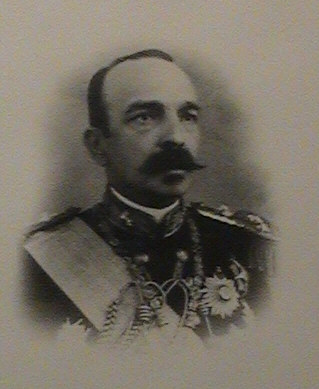
Sebastião Custódio de Sousa Teles, also known as Sebastião Teles, Sousa Teles, or in contemporary Portuguese as Sousa Telles, was a Portuguese politician and military officer. After a career in military logistics and education, he served multiple times as Minister of War, and briefly as President of the Council of Ministers from 11 April to 14 May 1909 during the penultimate year of the Portuguese constitutional monarchy.
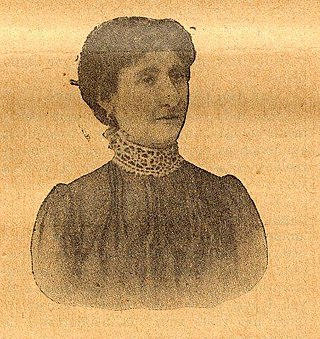
Ana Augusta de Castilho was a Portuguese feminist, teacher, propagandist, freemason, and republican activist opposed to the Portuguese monarchy.





















